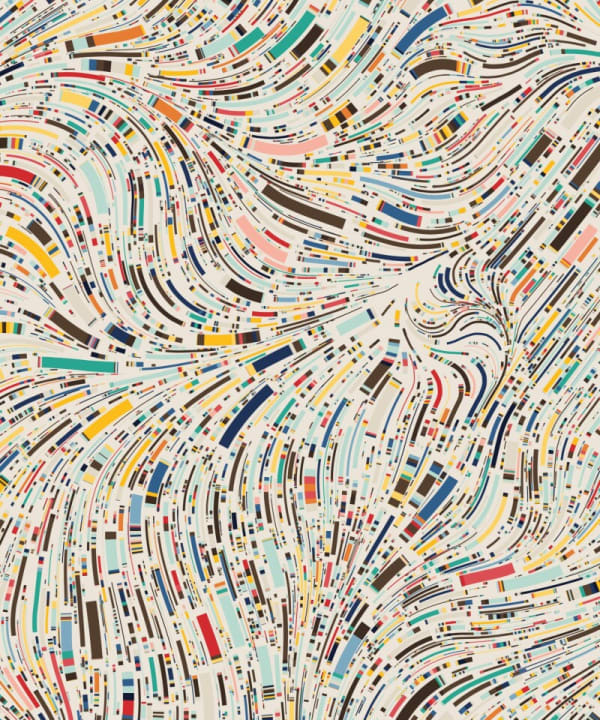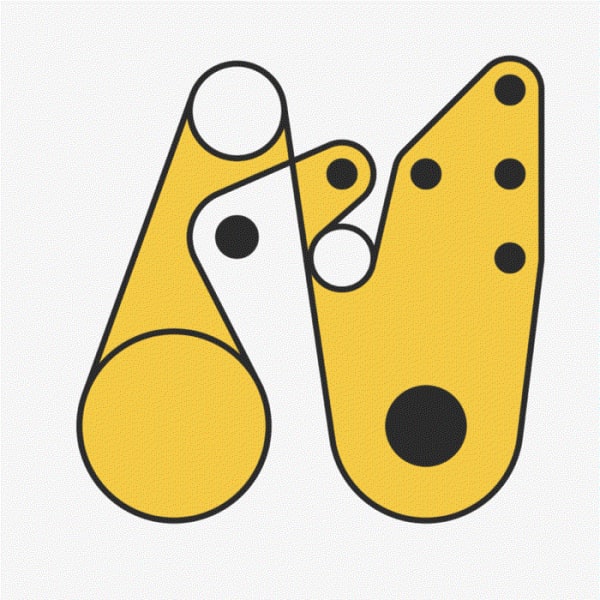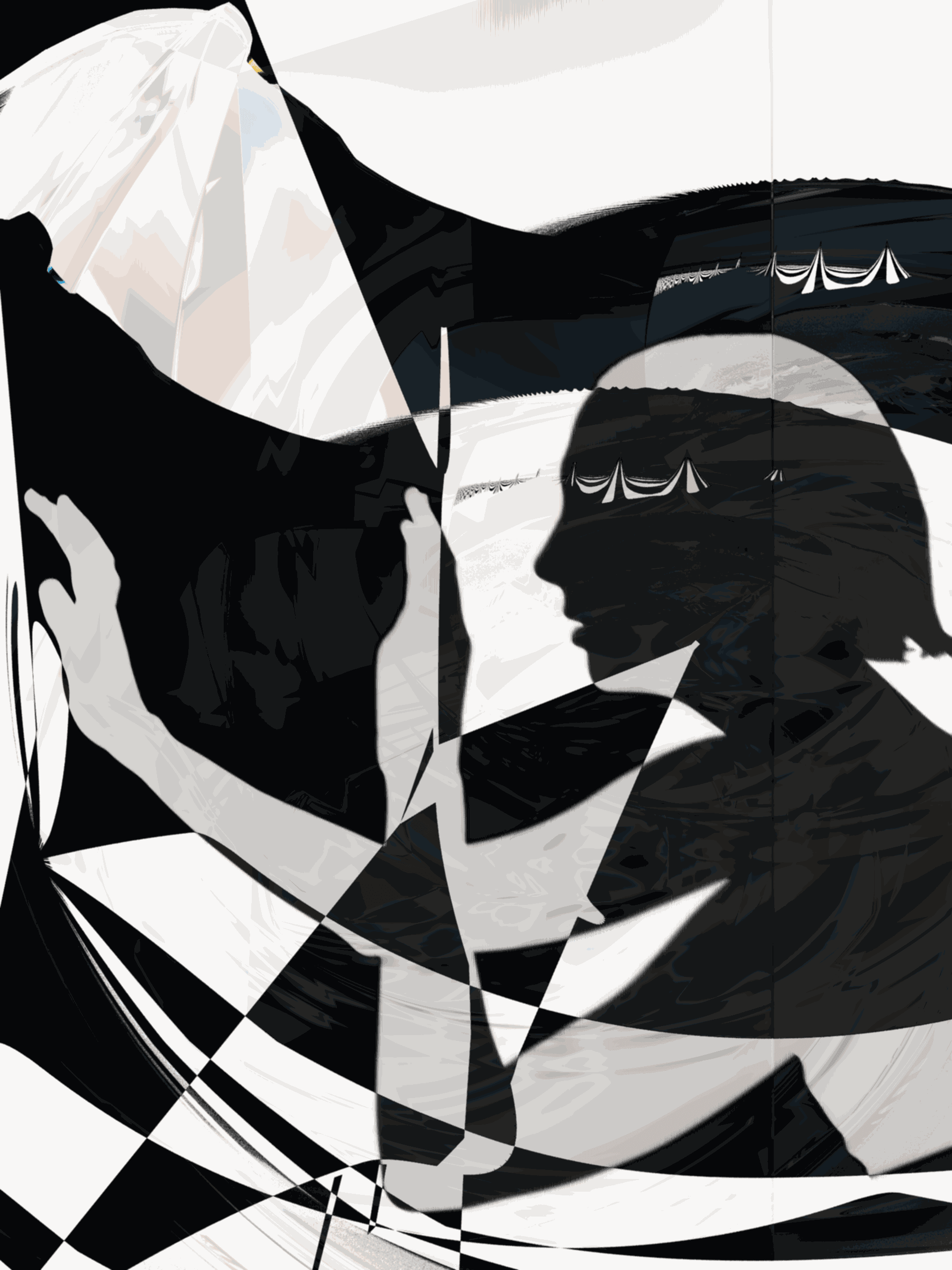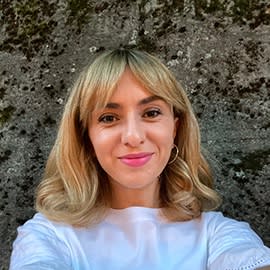-
Words by Sofia Gkinko"The idea becomes a machine that makes the art."Sol Lewitt, "Paragraphs on Conceptual Art", 1967The NFT becomes a medium that (re)makes the art, to paraphrase Sol Lewitt; but what is really an NFT and how is it (re)making art forms, practices, and the market? NFTs, or Non-Fungible Tokens, are unique tokens stored on a blockchain that get exclusive ownership rights: they can have only one owner at a time. In some cases, there might appear a limited number of NFTs for the same work, similar to a limited edition of a physical work. Once an NFT is minted, anyone can view and access the metadata, ownership history and other information; all transactions are publicly viewable and the record documenting the ownership history for each NFT cannot be altered or erased. Provenance is therefore automated, accurate and verifiable, with royalties and resale royalties to be remaining a core topic in the artist - collector - marketplace triangle.
NFTs are a mechanism allowing on-chain representation, reshaping artistic practices, crafting trends, and pushing the boundaries; despite all the booms and downturns in the market of art NFTs, this novel technology has been breaking through into the mainstream. -
The early NFT collections had a collectible and gaming flavor (Rare Pepes, 2016, CryproPunks and CryptoKitties, 2017); and PFPs (Profile Pictures) - a subset of a broader model of visual virtual identities and remain iconic and the largest market category. Larva Labs' - the team that created the massive hit CryptoPunk NFTs - Autoglyphs take the crown as the first-ever "on-chain" generative art NFT project in history; originally created in 2019, they are a completely self-contained mechanism for the creation and ownership of an artwork. Being literally art on the blockchain, meaning that the whole process is operating and stored on the blockchain, the code brought together various symbols schemes like +-|, /\, \|-/, and O|-, and the artworks pay homage to the pioneers of generative art, Ken Knowlton and Michael Noll, responding in an innovative way to the technical nature of the NFT phenomenon.Chromie Squiggle collection was published in 2020 by Erick Calderon (aka Snowfro) - the creator of Art Blocks, a pioneering platform for generative art - emerged as one of the first bluechip generative art projects; Snowfro's signature as a developer, tinkerer, and artist. Representing a multicoloured digital serpent and forms a modern equivalent the "brushstroke" Roy Lichtenstein, concisely encoding the gesture of artmaking itself, it is considered as the "genesis" of the generative art now being made with crypto technology.The first purely digital work of art ever offered by a major auction house, EVERYDAYS: THE FIRST 5000 DAYS by Beeple (aka Mike Winkelmann), was auctioned at Christie's in 2021 and sold $69.3M, positioning Beeple among the top three most valuable living artists. The artist has stitched together recurring themes and colour schemes into an aesthetic whole. The individual pieces are organised in loose chronological order: zooming in reveals pictures by turn abstract, fantastical, grotesque, or absurd, deeply personal or representative of current events; the notable differences between the early and later "everydays" reveal his evolution as an artist.
-
The term generative art describes works based on an algorithmic code or a mathematical formula; it is created through a set of rules that automates the output where there is usually randomness embedded in the algorithm. The process is defined by the artist, and the output is a sort of machine and artist collaboration. The beginnings of generative art are linked with the minimalist and conceptual movements of the 1960s and 1970s, while artists began to experiment with analog devices and mechanical systems already in the 1950s.
Today's generative art projects on the blockchain are bringing a long-standing art practice together with the new technology, pushing the medium in new directions and eras. Specifically, long-form generative art, where algorithms are designed to produce various outputs, each previously unknown to the artist and collector, within a unified artistic vision, bringing randomness at the very heart of the process, is an approach that pre-NFTs was quite difficult to do, if not impossible.Tyler Hobbs is one of the leading figures in the contemporary generative art scene who often explores computational aesthetics. His Fidenza series, released in 2021, is based on a "flow field" algorithm that generates organic, curved shapes; the series of works sold out in minutes and it rapidly grew into one of the most highly regarded generative art projects to date.Dmitri Cherniak's Ringers #879, from his 1,000-piece Ringers series, sold for $6.2 million in June. Drawing influence from the Swiss graphic designer Armin Hoffman, Cherniak wanted to create art based on the concept of wrapping strings around pegs and was fascinated by the seemingly limitless ways in which to do so. When performed by an algorithm, the variation in the number of pegs, location, peg size, colours, and wrap orientation resulted in thousands of visually compelling combinations. The concept behind Ringers lies in its simplicity. -
 Human Unreadable #296, Courtesy Art Blocks & Operator
Human Unreadable #296, Courtesy Art Blocks & Operator -
Human Unreadable is a three-act embodied generative artwork by the artist duo Operator, weaving together code, choreography, blockchain, generative art, cryptography, and performance into an evolving conceptual experience: the slow recovery of the human. Rooted in various histories such as computational choreography (Analivia Cordeiro, Jeanne Beaman), Merce Cunningham's Chance Dance, and the Experiments in Art and Technology movement; Human Unreadable brings emotion and intimacy on-chain and it proves that long-form generative art is the finest artistic expression to capture and elevate its nature.Refik Anadol, is embedding media arts into architecture with data and machine intelligence for public art, data sculpture and paintings; and to use his words: "I am trying to find ways to connect memories with the future, and to make the invisible visible." Unsupervised - a meditation on technology, creativity, and modern art - is an ongoing project exploring data aesthetics based on collective visual memories; it emerges from an aesthetic/scientific vision and processes 138,151 pieces of metadata from the vast collection of the MoMA in the mind of a machine. Living Architecture: Casa Batlló, the first live dynamic and generative NFT of its kind, sold for $1.4 million last year, for which the artist used environmental data gathered real-time from sensors placed around Antoni Gaudí's Casa Batlló in Barcelona.Sasha Stiles, a pioneer of generative literature and language art, whose award-winning work fuses text and technology to probe what it means to be human in an increasingly posthuman era, is dynamically proving that NFTs can create new markets for art. Her practice has been contributing to the emergence of blockchain poetry: In 2022, she became the first writer to bring AI-powered literature to a major auction house when her poem, COMPLETION: When it's just you, sold at Christie's. The Future Frequencies: Explorations in Generative Art and Fashion NFT collection with a focus on the interplay between autonomous systems and fashion, for which Christie's 3.0 teamed up with Gucci, illustrates the dynamics of this medium and unites two worlds that otherwise we are not used to see together.Another case contributing to the inclusion of digital artworks in mainstream sales is Sotheby's July Contemporary Discoveries auction featuring works by Hobbs, Cherniak, and Larva Labs alongside Calder, LeWitt, and Warhol.
-

Vera Molnár in collaboration with Martin Grasser Themes and Variations #380, Courtesy Sotheby’s






